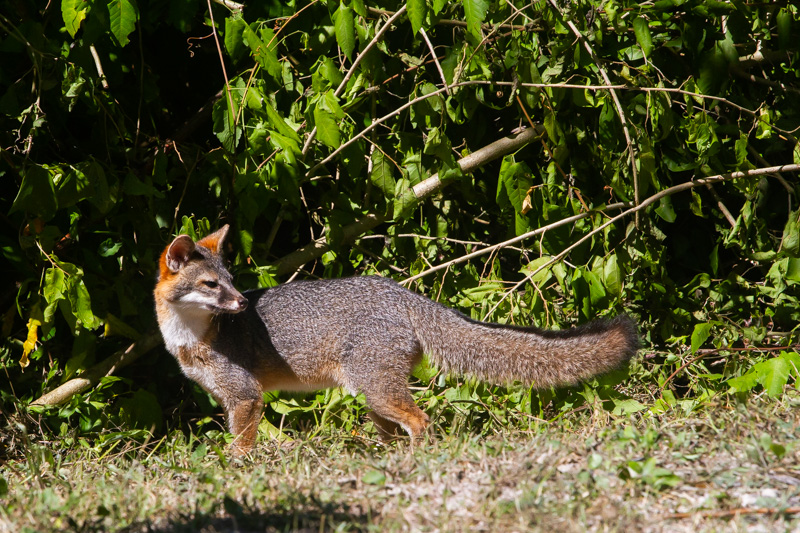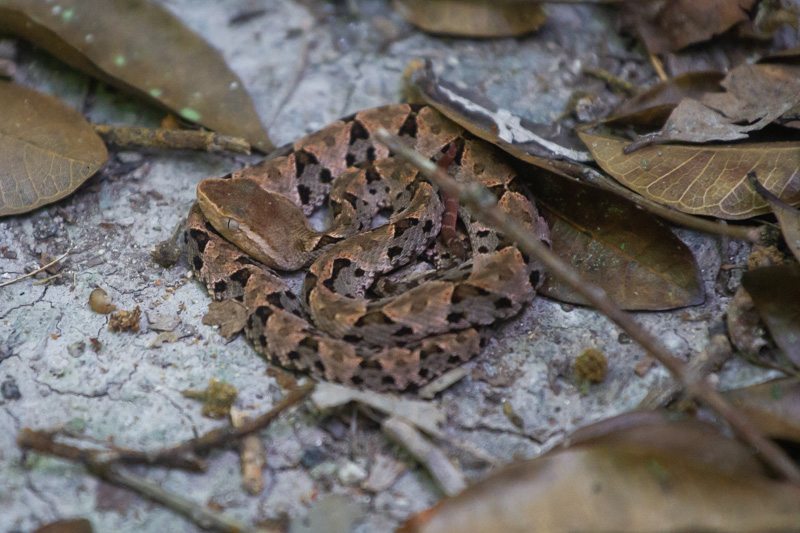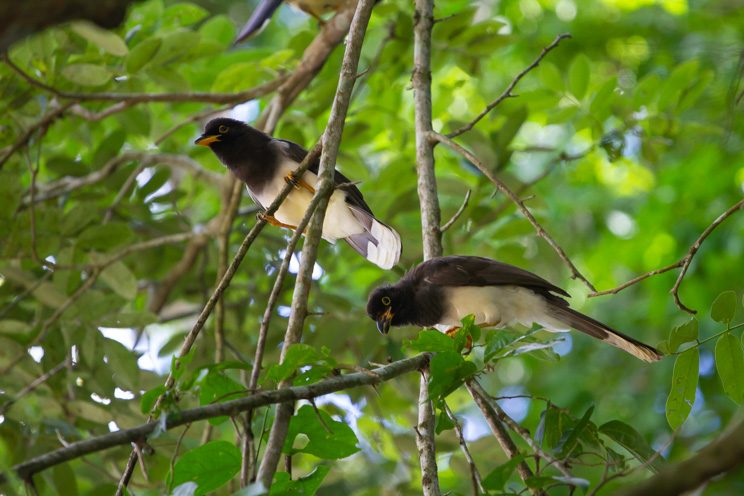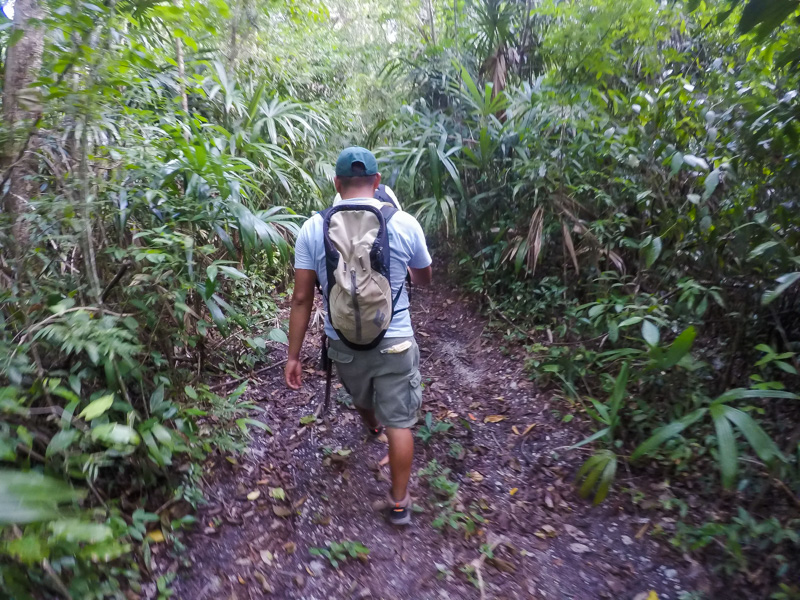The Zotz-Tikal-Uaxactun circuit, a journey of natural richness and biodiversity
- Like everything that is within the Maya Forest, north of Petén, the El Zotz-Tikal-Uaxactun circuit is an area where communities seek to create development opportunities, based on respect for the natural resources that surround them.
- What is not seen in tourist promotions is the deep love and attachment that the people who live in these areas feel for the wildlife they co-inhabit.
Mayan temples, coatis, tapirs, jaguars, birds of different types, impressive landscapes. Any of these images can come to the head of any person when thinking of Peten. Before the pandemic, this was one of the most sought after sites by international tourism visiting Guatemala.
What is not seen, and little is highlighted in tourist promotions, is the effort, dedication and commitment of the communities that inhabit these areas, to create development opportunities, without damaging the natural environment. “I think it is very good that people feel a direct benefit by dedicating themselves to the issue of conservation,” said Julio Lizano, a local tourist guide from Petén.
At present, 33% of the territory of Guatemala has forest cover, and in this part of Peten there is a third of it. For this reason, in addition to having been the ancient epicenter of Mayan activity, this area, known as Selva Maya, shared by Guatemala, Belize and Mexico, is the second largest tropical forest in Latin America, after the Amazon, with more than 4 million hectares of jungle, where more than half a million people live, who need sustainable economic activities to guarantee their subsistence.
The international media Mongabay recently published an article highlighting the trinational effort to protect the Selva Maya: “With the support of different international non-governmental organizations, as well as state and civil entities, the three countries have undertaken the task to strengthen their own mechanisms for conservation and sustainable use to create a biological corridor.” It also adds that “it is expected that this corridor allows the survival of wildlife and the obtaining of adequate knowledge to create networks for the exchange of information and experiences to generate development without damaging the forest and those who inhabit it.”
Even after millennia, emblematic species such as the jaguar (Panthera onca), the tapir (Tapirus bairdi) and the macaw (Ara macao), continue to be part of the local imagination. There are others of great importance, such as the white-lipped peccary (Tayassu albirostris) and the white turtles (Dermatemys mawii), all in serious danger of disappearing.
With all this natural heritage at hand, communities such as La Cobanerita, Cruce Dos Aguadas, Paso Caballos, and Uaxactun, to name a few, seek a way to create conservation programs, which at the same time allow the arrival of visitors who like the natural tropical jungle life that only this part of Guatemala can offer. In 2019, the El Zotz-Tikal-Uaxactun circuit was created, a walking tour of three days and two nights through the jungle, which allows you to immerse yourself in the density of the jungle, and get in touch with a reality that is very far from the that we are used to today.
El Zotz-Tikal-Uaxactun Circuit

Thanks to a promotional trip sponsored by the Guatemalan Tourism Institute (Inguat), and with the company of a group of local guides and tourism companies, the goal is to promote the project to unify the Mayan Routes, which seeks to attract more tourism to places such as the San Miguel La Palotada Biotope, El Zotz, Tikal, Uaxactun and the Nooch Nach Cultunich Caves on the outskirts of the La Cobanerita village.
Lizano, one of those local guides, has extensive empirical knowledge of the area, which helped to detect a good number of wild species during the tour. Like his companions, Lizano knows what type of mammal, reptile or insect can be observed from the trails between which the caravans of visitors move.
An example of this occurred in the San Miguel La Palotada El Zotz Biotope, where the group detected a pair of gray foxes (Urocyon cinereoargenteus) that live near the bathroom of the site’s camp. According to one of the group’s guides, “(the foxes) go down to look for food from time to time, and when there are not many people nearby, they move along the foliage of the jungle.” They are similar in size to the coyote, and are both carnivores and scavengers. It feeds on squirrels, mice, birds, and insects.
Another species that could be observed, under the litter, was the yellow-bearded snake(Bothrops atrox), one of the most aggressive and deadly snakes in Latin America. Its venom causes necrosis in the tissue around the bite before causing a slow and painful death.
So dangerous is this poison, that there are anecdotes of people who are dedicated to the extraction of Xate, who have been bitten by this snake while doing their work, which meant that the jungle would be their last resting place. “You have to walk about three hours to get out of the jungle, get to the community, travel by car for another two hours to the central area and wait until they have an antidote. It is better to make peace with life and accept fate,” said a Xatero.
 During this tour, it was learned that El Zotz is a place known for the massive number of bats that inhabit this area. In fact, its name is a Mayan word that means bat. Although, for the general public it is an unknown place, because Tikal, Yaxhá and the Flores Island are the places most claimed by Guatemalan visitors, researchers and biologists know of this site due to the Peñon de los Murcielagos, a natural stone formation. limestone more than 20 meters high, and where several species of these winged mammals live.
During this tour, it was learned that El Zotz is a place known for the massive number of bats that inhabit this area. In fact, its name is a Mayan word that means bat. Although, for the general public it is an unknown place, because Tikal, Yaxhá and the Flores Island are the places most claimed by Guatemalan visitors, researchers and biologists know of this site due to the Peñon de los Murcielagos, a natural stone formation. limestone more than 20 meters high, and where several species of these winged mammals live.
The intention of including El Zotz in a tourist tour, in addition to providing opportunities for the community, is to make people understand about the importance that these areas have in maintaining the biological balance of the Guatemalan territory. As is well said, Guatemala, like the rest of Central America, is a “megadiverse” country, due to its geographical position and climate. Mammals like bats, are pest controllers, spread seeds and pollinate some plants. According to the Guatemalan biologist María José Hernández, who is dedicated to the study of bats in Guatemala, “there are three main species to protect such as Trachops cirrhosus, Nyctinmps laticaudatus and Mimon bennettii.”
She also added that some of these species, such as Trachops and Mimon, are on the Guatemalan list of endangered species, due to the “decrease in their habitat and the use of chemical pesticides to control pests, which affect the dams of those that feed “.
The birds of Tikal and Uaxaca

Little new can be said about Tikal. It was the first national archaeological park in Guatemala and its importance has transcended borders to offer itself as one of the country’s tourist icons. This influenced so that it was there where bird watching, as a recreational activity began, since international tourists who visited the site took the opportunity to document the great variety of bird species that move through the place.
It is the ideal place for birding, since the platforms placed in some structures, such as Temples II and IV, allow a panoramic view of the treetops, places where many birds perch. Here you can see birds such as the chara pea (Psilorhinus morio), toucans (Ramphastos sulfuratus), the pale-billed woodpecker (Campephilus guatemalensis) and a variety of parrots and hawks.
Uaxactun, on the other hand, is a wonderful place that few people visit, despite being only 23 km north of Tikal. In this place the first Mayan observatory was discovered and unique events such as sunrise during the winter and summer solstices take place there.
According to Gabriel Urruela, Guatemalan wildlife photographer, the Uaxactún community still struggles with the image that its people have of hunters and grave robbers, but even so, they are willing to demonstrate their commitment to the conservation of the wildlife of the region. zone.
In addition to its archaeological structures, Uaxaca, as it is known locally, allows you to appreciate birds of prey such as the road hawk (Ruponis magnirostris) or the black stilt hawk (Geranospiza caerulescens). If luck and time allow it, it is also possible to see some small mammals or traces of the great jaguar.
